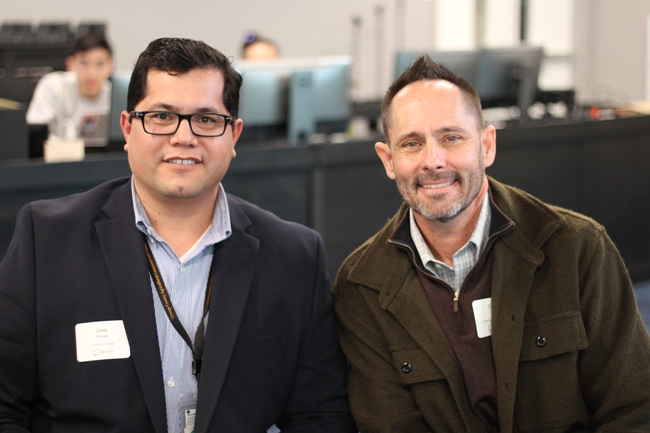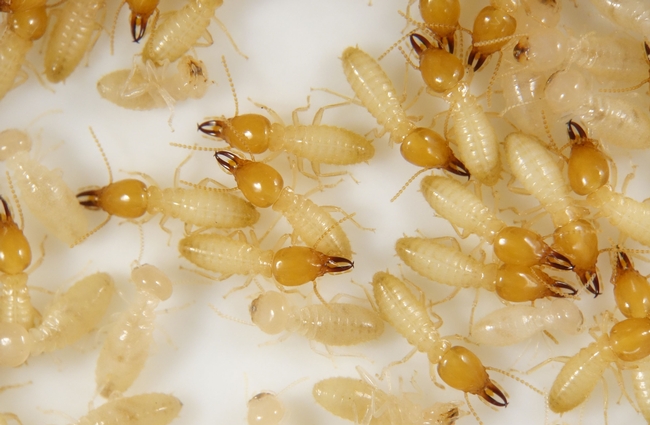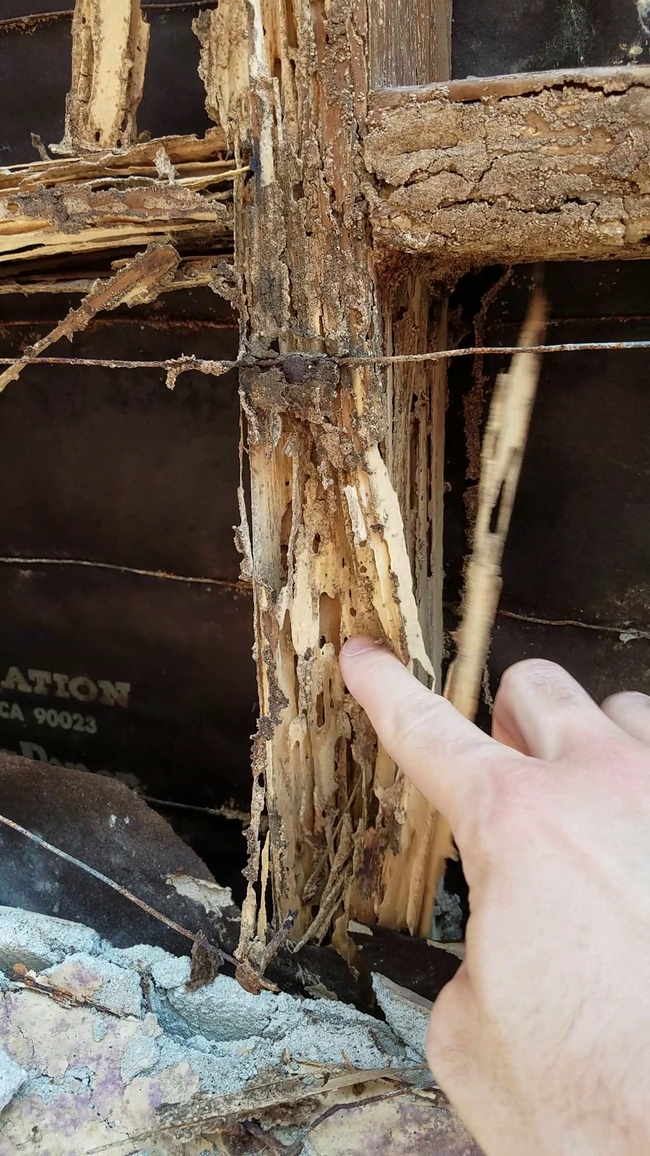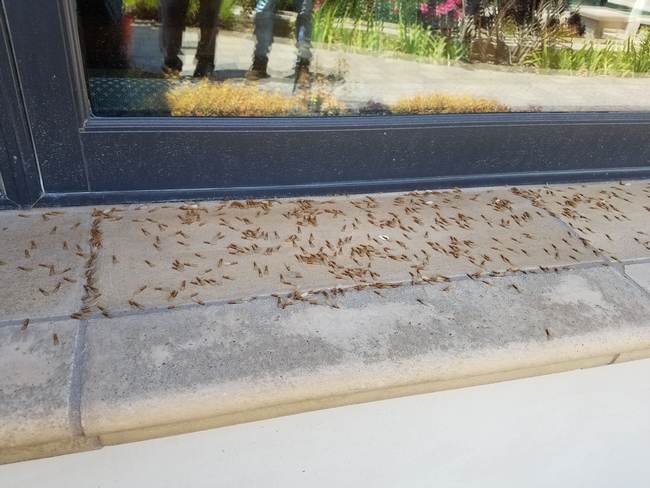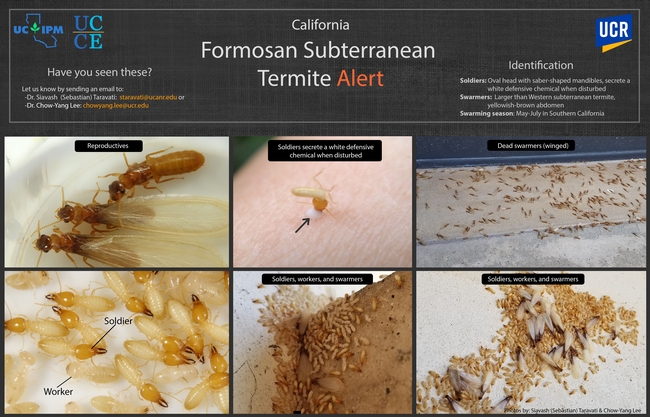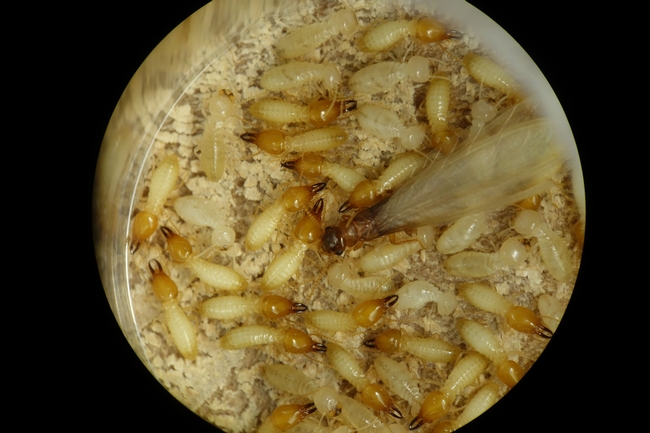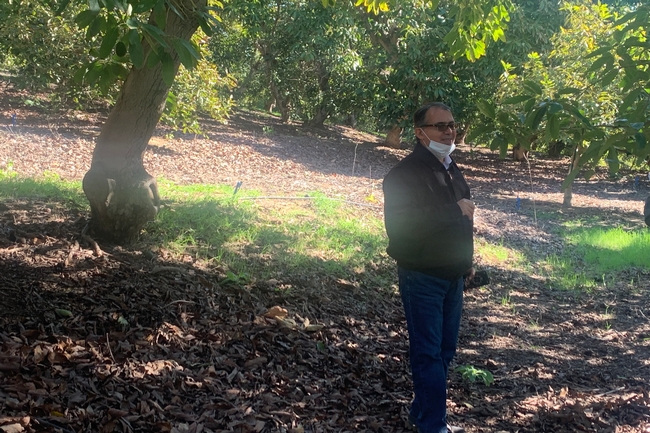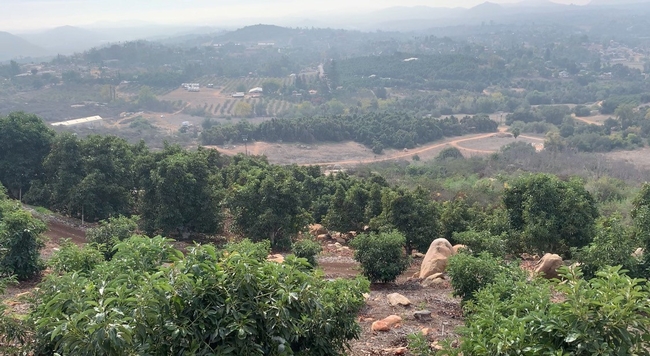Posts Tagged: SoCal
REC System Director Haver encourages systemic approach to agriculture
Agriculture generates $59 billion and employs nearly 400,000 individuals in California. The industry, however, is often threatened by challenges like climate change, land conversion and water scarcity. Motivated to act, Sustain Southern California – an organization associated with UC Irvine Beall Applied Innovation – hosted a roundtable discussion on Feb. 20 featuring subject matter experts including Darren Haver, director of UC Agriculture and Natural Resources' Research and Extension Center System.
During his keynote address, Jose Arriaga, Orange County Agricultural Commissioner, defined sustainability as food and fiber production that does not compromise the ability for future generations to meet their needs. In doing so, he acknowledged the benefit of discussing such timely topics with key players, especially for places where agriculture is not as prevalent as it used to be.
“Many people don't think of Orange County as a place for agriculture. It's probably because less land is being reserved for agriculture, not like back in the day. And that worries me,” said Arriaga.
The first roundtable discussion centered on sustainable agriculture, with Haver participating alongside other industry leaders based in Southern California, including A.G. Kawamura of Orange County Produce, Steve Brazeel of Sunterra Produce and Elevated Foods, Anthony Curci of Buttonwood Ranch and Parker Cohn from Performance Resource Management.
In discussing today's generation, Haver said that he has seen a shift over the last few decades away from yield alone, which used to be the most important aspect of production in agriculture. Today, much more attention is dedicated to sustainability – a change that Haver attributes to the younger generation of researchers and plant scientists working in agriculture.
There has also been an emphasis on sustaining the environment while maintaining economic progress. Haver recognized these important elements, but highlighted the social impact of sustainability, too.
“I don't have all the answers, but I do believe that addressing the environmental, economic and social aspects of agriculture is important. I also think that these factors should be addressed systemically rather than in silos,” said Haver.
Southern California agricultural producers, in particular, are responsible for $7.8 billion in gross receipts and nearly 100,000 jobs directly related to agriculture. In Orange County alone, where Haver is based at the South Coast Research and Extension Center, agriculture makes up $86 million of total economic output, with nurseries leading as a top commodity followed by fruit trees, vegetable production and livestock and apiary.
Cooperative Extension advisor, UC experts tackle ‘nightmare’ termite
During summer swarming season, homeowners urged to check for signs of Formosan subterranean termite
In the lottery of troublesome termite infestations, “Roger,” a Rancho Santa Fe homeowner, hit the jackpot (a pseudonym is used to protect his privacy). In 2021, his house in San Diego County was identified as home to only the fourth documented colony of the Formosan subterranean termite (Coptotermes formosanus) in California.
“FST is one of the most destructive urban pests in the world,” said University of California, Riverside entomologist Chow-Yang Lee, affiliated with UC Agriculture and Natural Resources through the campus' Agricultural Experiment Station. “It's also the only termite species listed in the ‘100 of the World's Worst Invasive Alien Species.'”
Endemic to East Asia, this termite is now established in many tropical and subtropical regions, including across the American South. Annually, its infestation costs more than $4 billion in control measures and damage repairs of structures in the U.S.
FST was first discovered in California in La Mesa (San Diego County) in 1992, and it was rediscovered in that city in 2018. Another infestation was reported in Canyon Lake (Riverside County) in 2020. And then, the following year, Roger received his surprise.
“Imagine being in your kitchen looking at your drywall and it's totally normal and then the next day there's a four-inch hole there and you're like ‘What the heck is that? Who put their elbow into the drywall?'” he recalled.
FST colonies can reach millions of individuals
Roger hired a pest control company, Green Flash Pest Control, which sprayed a powerful liquid termiticide in the soil around the house. But the termites – workers, soldiers and winged “alates” – continued to appear. The company tried a second application of soil treatment. But, again, the termites kept popping up.
“We were deeply concerned about the potential damage these termites could cause to the home since these invasive termites are extremely destructive,” said Eric Veronick, director of operations at Green Flash. “Unfortunately, there isn't a whole lot of information available on the behavior and management of this termite in California.”
The company called upon Siavash Taravati, a UC Cooperative Extension urban Integrated Pest Management (IPM) advisor based in Riverside.
“Some colonies are aerial, meaning that they are formed above the ground with limited or no connection to the soil – in such cases, soil treatment using contact insecticides may not be very effective in managing these termites,” Taravati said. “Furthermore, contact insecticides usually kill a much smaller portion of the colony when compared to termite baits.”
To make matters worse, once FST is established in an area, there have been no records of successful eradication anywhere in the world, according to Taravati. He added that a major reason why the Formosan subterranean termite is so destructive is the enormous size of their colonies.
“Their colonies can reach millions of individuals, versus most native subterranean species that reach a few hundred thousand individual termites per colony,” Taravati explained.
This termite, through its sheer numbers, can turn the wood in a structure into a “spongy kind of cake,” in Taravati's words. More than 10 pounds of wood in a house can be eaten by a mature colony each month. The financial hit for a homeowner can be substantial, up to tens of thousands of dollars – not to mention the increased risks to safety.
“Anything from studs to rafters to door frames and window frames – everything is going to be compromised, if the termites are left unchecked. And then, as soon as we have a major stress on the building, let's say there's a big storm or an earthquake – there's a high risk of at least part of the building collapsing,” said Taravati, who also noted that, unlike California native subterranean termite species, FST can attack and kill live trees and plants.
“These termites can be a nightmare,” he said.
Summer is ‘swarming season' for FST
Since the Rancho Santa Fe case in 2021, four more colonies have been documented, in La Mesa again and also in Highland Park, Hollywood Hills and La Verne (the latter three in Los Angeles County). Taravati said it's possible that FST has been spreading via structural lumber or potted plants and soil.
And even if a colony appears to be eliminated at a certain locale, Taravati noted, there is always the chance that part of the colony survives or more colonies of termites already have been established in nearby locations, as a result of swarming termites from the originally infested property.
Although nominally “subterranean,” certain members of an FST colony grow wings and fly to nearby locations to establish new colonies. These winged alates are also called swarmers because of their behavior during the “swarming” season, when termites mate and reproduce.
For the Formosan subterranean termite, that swarming season in California is late May through early August, so now is the time for homeowners and building managers in southern and central California to keep an eye out for those winged termites.
“If you experience a termite swarm in your house, contact a pest management professional and keep some termite samples in a Ziploc bag in the event you need to send the samples to UC Riverside for morphological and DNA-based identifications,” said Lee, who added that it's a good idea to periodically check your structure for signs of infestation, such as wood damage or shelter tubes (mud tubes).
Lee said FST swarmers have a lighter colored body compared to the dark color of native subterranean termites and the orange-brown body of drywood termite swarmers (see this flyer for additional identification information).
Following an especially wet winter, there's a chance California could see more FST infestations, as this termite generally requires moist environments to thrive, Lee added. He recommends that concerned community members seek professional advice.
“Do not attempt to control an FST infestation by yourself,” Lee said. “This is not your typical native Californian subterranean termite species; they are highly destructive, and you want to intercept the problem with the right strategy before it's too late.”
Homeowner: ‘I owe them my house'
In Roger's case, Taravati enlisted the help of Lee and his UC colleague, Greg Kund. They made multiple visits to inspect the home and analyze the situation – going “above and beyond,” according to Roger.
At Lee's suggestion, they used a caulk gun to insert a gel-like experimental bait into the wall where the termites were coming out. Once spread and passed on to the other nestmates, the product – which contains a chitin synthesis inhibitor (a type of insect growth regulator) – interrupts the termites' development so they are unable to properly molt and replace the short-lived “workforce” of foragers and soldiers. The colony eventually collapses and is eliminated.
“Generally speaking, IGRs are much more effective, but they require more patience,” Taravati explained. “You're not going to see the results the next day, or two-three days. You're going to see the results in a few weeks – but when you see the results, it's massive.”
And that's exactly what Roger and Green Flash Pest Control saw.
“Soon after their bait application, the termites stopped emerging from the walls and that gave us and the homeowner a big sigh of relief,” Veronick said. “I appreciate their expertise and dedication in helping us get rid of this destructive pest."
Roger said he is immensely grateful to the UC team.
“They were fantastic; I owe them my house,” he said. “They were super gracious and helpful and responsive and – ultimately, the thing I care most about – they were effective; they fixed the problem. Here we are two years later and – knock on wood, or maybe I should knock on something else! – everything is good.”
Lee also credited Taravati for bringing his knowledge and “can-do” attitude to communities across Southern California.
“He is highly knowledgeable and always able to come up with feasible solutions,” Lee said. “We need good Cooperative Extension urban IPM advisors like Siavash who could provide good advice and bring solutions to the stakeholders, be they homeowners or pest management professionals.”
Taravati said community members need to maintain their vigilance and urges them to download and share the FST flyer that includes identification tips and contact information. He said they are always free to e-mail him with their concerns and photos of suspected FST – not only to help stop the spread of the pest but to expand scientific understanding.
“This termite is so new to California – even for us, as researchers. Despite being in La Mesa since the 1990s, it wasn't until 2020 when these termites were detected in other places, including Riverside and Los Angeles counties,” Taravati explained. “All of us need to learn more about this pest and closely monitor the behavior of this pest.”
Avocado growers to get irrigation tools, strategies from UC ANR’s Montazar
CDFA grant supports research to optimize water use for iconic California crop
California growers, who account for more than 90% of avocado production in the U.S., will soon be getting some help in weathering the extreme fluctuations of climate change.
Ali Montazar, a University of California Cooperative Extension irrigation and water management advisor, recently received a grant to develop tools and strategies that optimize growers' irrigation practices across Southern California – the state's avocado belt. California avocados are valued at more than $411 million, according to the National Agricultural Statistics Service.
“This region faces uncertain water supplies, mandatory reductions of water use, and the rising cost of water – while efficient use of irrigation water is one of the highest conservation priorities,” Montazar said. “Water is the most critically important input to avocado production.”
At the California Avocado Commission's suggestion, Orange County was added to the study to better capture the range of climates and cropping systems across the region, Montazar said.
He hopes to develop “crop coefficients” that avocado growers can use to determine the optimal irrigation for their crop based on a host of factors: soil type and salinity, canopy features, row orientation, slopes, soil and water management practices, and more.
“Growers are unclear on how much water the crop actually needs under those conditions,” Montazar said.
He will incorporate data from the actual water use in the experimental orchards – including information from the newest soil moisture and canopy temperature sensors – to help ensure growers do not under- or overwater their crops. Overirrigating contributes to a devastating disease, avocado root rot, caused by the plant pathogen Phytophthora cinnamomi.
Another component of the grant supports outreach in disseminating these resources and best practices to the broader agricultural community.
“Developing and adopting these tools and information may have a significant impact on water quality and quantity issues and bolster the economic sustainability of avocado production not only in the well-established production region of Southern California, but also in Kern and Tulare counties where new avocado plantings are growing,” Montazar said.
Preliminary findings and recommendations are expected at the end of 2022.


